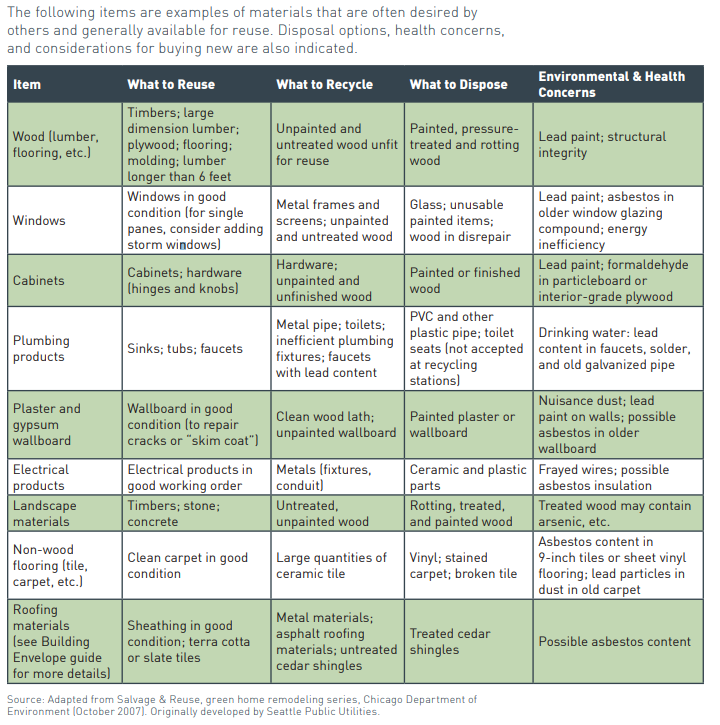Building Deconstruction Tips
Deconstruction is an alternative to demolition for the removal of unwanted structures. Deconstruction allows for the recovery and reuse of construction and demolition (C&D) materials.
Construction & Demolition (C&D) Materials often contain bulky, heavy materials such as:
- Concrete
- Wood (from buildings)
- Asphalt (from roads and roofing shingles)
- Gypsum (the main component of drywall)
- Metals
- Bricks
- Glass
- Plastics
- Salvaged building components (doors, windows & plumbing fixtures)
- Trees, stumps, earth and rock from clearing sites
Why Deconstruct?
- Deconstruction activities increase the opportunity for local business development and because it can be labor-intensive, results in local job growth.
- Can be cost-competitive with standard demolition due to reduced disposal costs, avoided purchases of new materials, revenue earned from material sales and potential tax incentives.
- Environmentally, deconstruction reduces construction and demolition waste, reduces air pollution, reduces carbon dioxide emissions, conserves landfill space, preserves resources and saves energy.
When feasible, deconstruction can be applied on a number of levels to salvage usable materials and significantly cut waste and reduce disposal. This can range from reusing an entire structure or foundation, to select assemblies and systems, to the careful removal of specific materials or items for reuse.
While complete deconstruction is the preferred and most sustainable method for removing or renovating a structure, it is not always possible due to the type of building and/or its components.
In many cases, a combination of deconstruction and demolition can be used.
Highly deconstructable buildings include:
-
Wood-Framed Buildings
-
Contain Specialty Materials with High Resale Value
-
Have High-Quality Brick-Laid Construction
-
Structurally Sound

Resources for Deconstruction Information, Types, Methods & Tips can be found here:
- Delta Institute "GO Guide" - Deconstruction and Reuse
- Environmental Protection Agency (EPA) Best Practices for Reducing, Reusing, and Recycling Construction and Demolition Materials
- Repurposed Materials Exchange
- Oneida County Habitat for Humanity ReStore
- Circularity, Reuse, and Zero Waste Development (CR0WD)